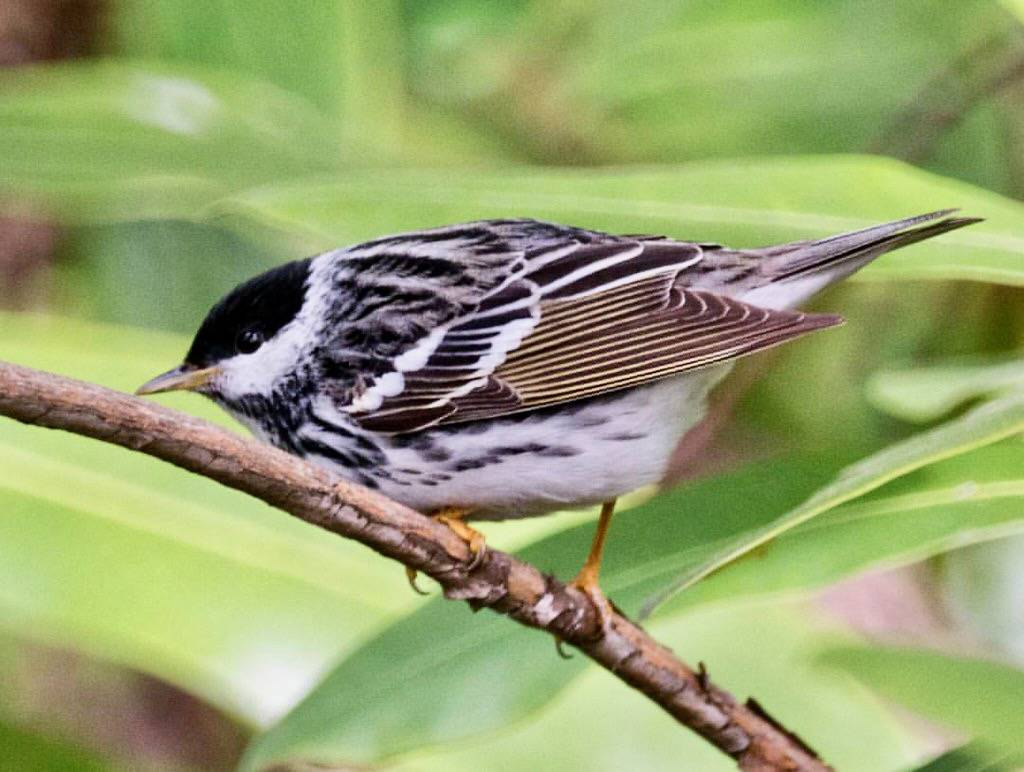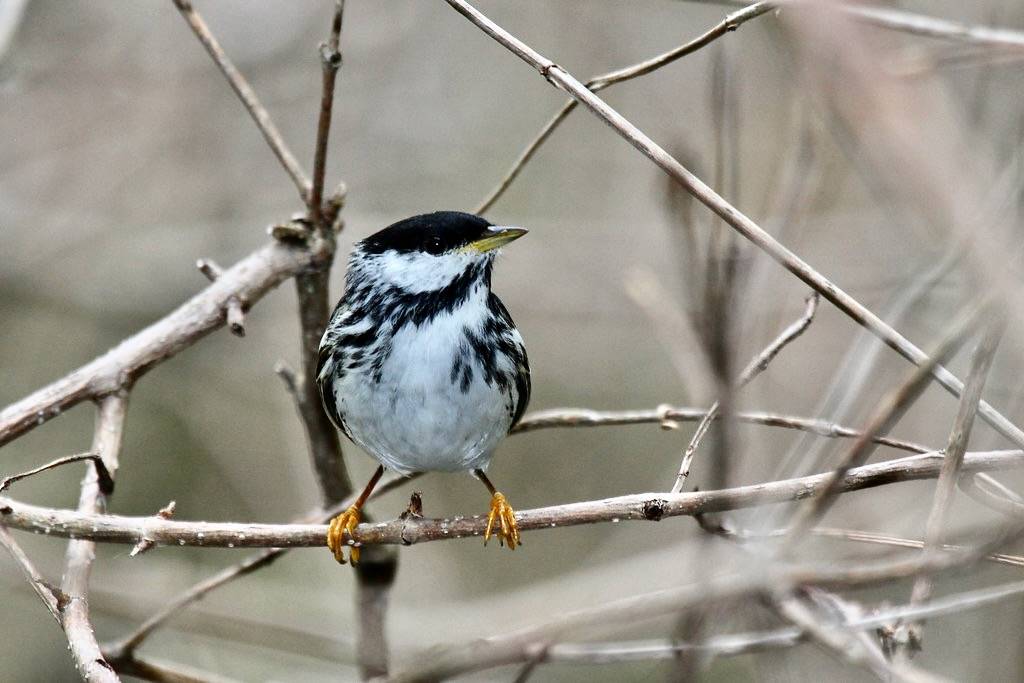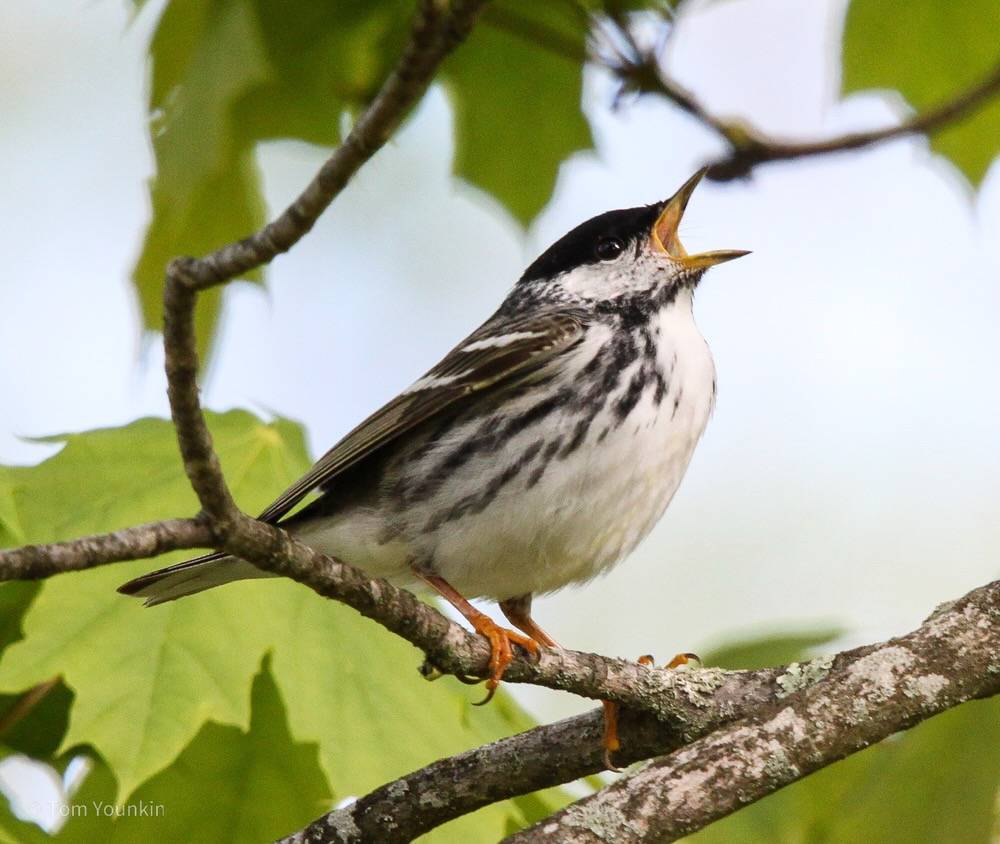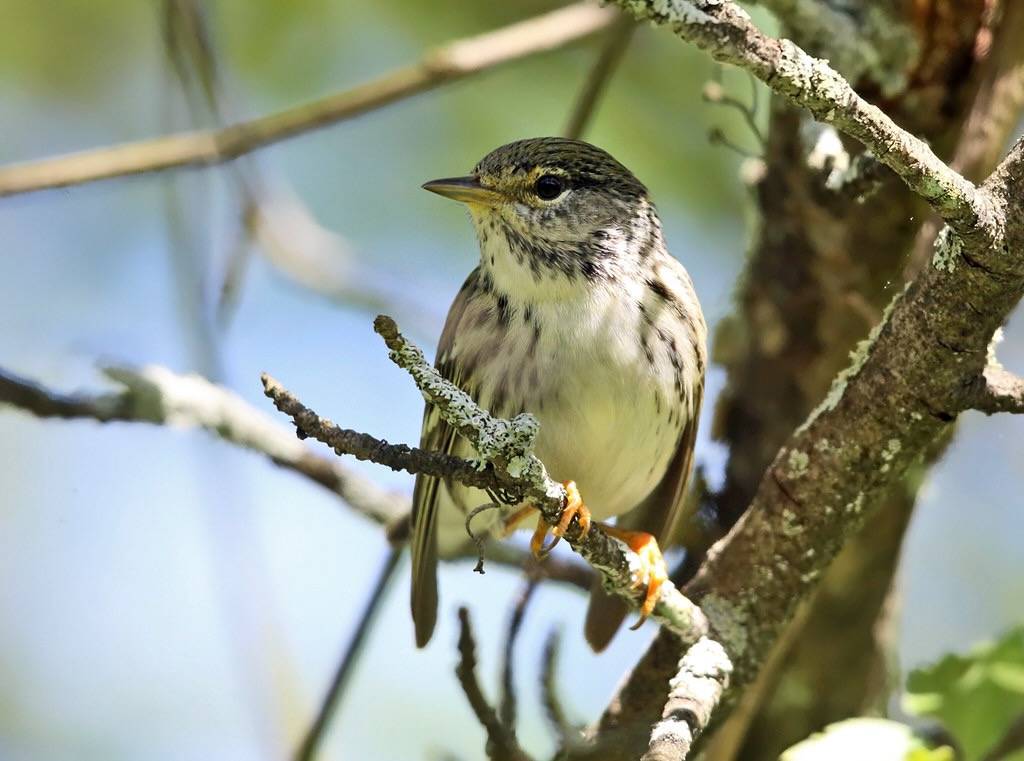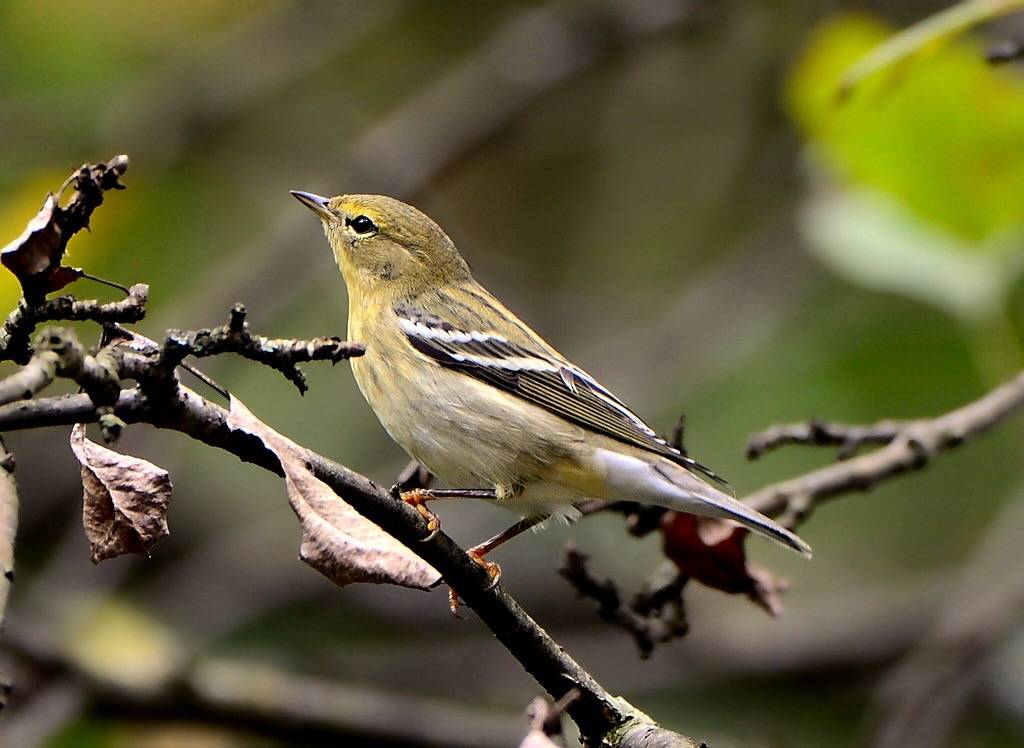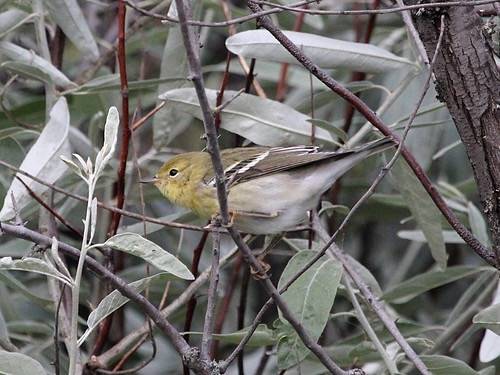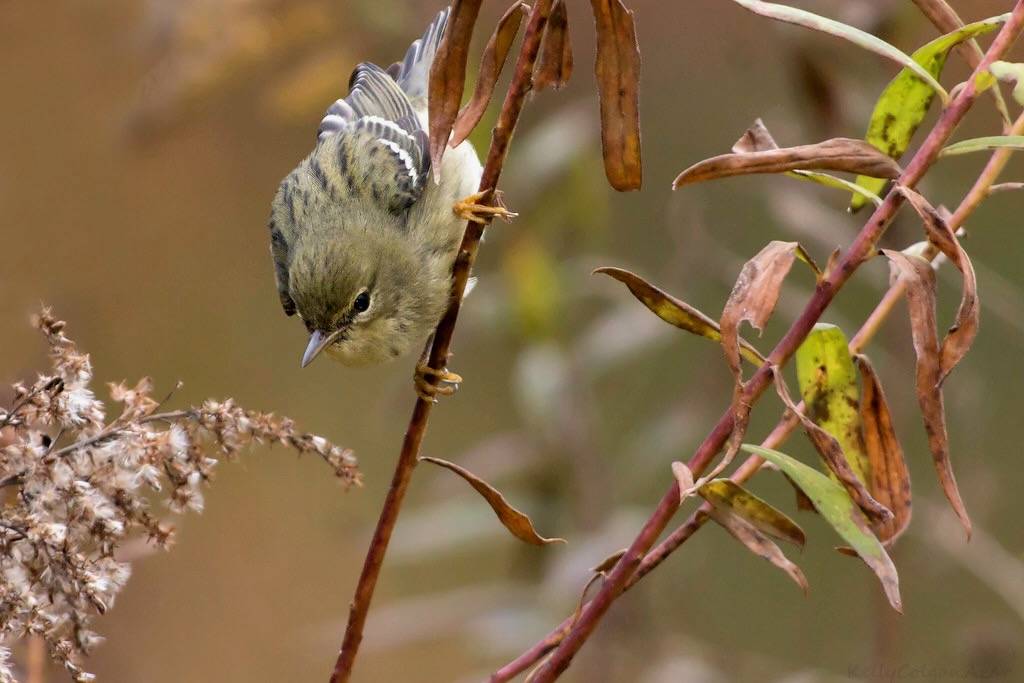Blackpoll Warbler
True to its name, the Blackpoll Warbler has a solid black cap that contrasts sharply with its white cheek. Birds in breeding plumage have been seen during spring migration in the upland woods at Salter Grove.
Once the breeding season is over, the black cap is gone as birds molt out of their breeding plumage and into their post-breeding olive-green plumage. It is one of the more commonly seen fall warbler in the park foraging in the small trees along the Marsh Trail in the fall. Although they are normally insectivorous, they do feed on berries in migration and during winter.
The Blackpoll Warbler breeds in the boreal forest of Canada and winters in northern South America. It weighs less than half an ounce--about the weight of a pen--and yet, it is able to fly 1,800 milesnon-stop over the Atlantic to its wintering grounds!
Studies have revealed that it has the remarkable ability to accumulate enough fat to double its body weight before starting its long migration. Quite a feat for such a small bird to accomplish twice a year!

